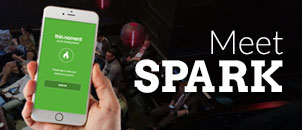It’s a new year and that usually means it’s time to bat around predictions for the coming year. So, I’d like to add one prediction for the future of digital technology in 2014. In short, “cards” are the future.
I stumbled on Paul Adam’s blog post about digital content cards and completely agree that cards are the future. Why? Well, these cards will help marketers tell stories in new and exciting ways – they’re interactive, collectible, stackable, bite-sized pieces of rich content with endless possibilities. Here are some thoughts on this hot new UX paradigm, and how it will change the way people consume content online.
Cards deliver concise bursts of information. They give marketers a great way to “tell quick stories”, but the main idea here is having individual pieces of content aggregated into a consistent experience. Similar to the way paragraphs group sentences into distinct sections, cards can gather various pieces of information to form one coherent piece of content.

Your stock portfolio could be represented with a group of cards – each card outlining the vital financial info for a single ticker symbol. Your travel plans could be a group of cards that deliver information about travel, lodging, weather and entertainment options. Or, you could create a collection of cards to represent all the gifts in your wedding registry. The use cases are endless.
Everybody is moving towards this new design concept, including Google, Twitter, Facebook, Pinterest, etc…
Cards are interactive. Cards are nothing new in terms of UX design. It’s actually the way they function that is important for responsive web pages – digital cards can be manipulated in all sorts of ways. Just like physical cards, they can be turned over to reveal more information, folded for a summary and expanded for more details, stacked to save space, sorted, grouped, and spread out to survey more than one.
With today’s web technologies, it’s easy to take advantage of animation and movement to make them interactive and immersive. They can be filled with multimedia content, photos, videos, music, and shared across the web. They are the new creative canvas, and everyone is moving towards displaying content using cards.
 It’s all about being responsive. On mobile devices, these cards can be stacked vertically, as you’d see in your friends’ Facebook timeline or Twitter page. They can also be stacked horizontally, adding a column as a tablet is turned sideways. They are also perfect for responsive rules since they can just be windows of variable size rendered in variable positions. They can be used as canvases reconfigurable by both website developer and website user.
It’s all about being responsive. On mobile devices, these cards can be stacked vertically, as you’d see in your friends’ Facebook timeline or Twitter page. They can also be stacked horizontally, adding a column as a tablet is turned sideways. They are also perfect for responsive rules since they can just be windows of variable size rendered in variable positions. They can be used as canvases reconfigurable by both website developer and website user.
With more and more users accessing social media and consuming digital content on their mobile devices, it’s important to ensure that the content is delivered in a way that’s engaging, clear and optimized for all the various mobile device screen sizes out there. Cards meet all those needs, and that’s why they are the future.
Cards will change the way marketers deliver content to fans, and in turn, will change the way fans interact with brands and branded content. Understanding the way people consume card-based content today gives you a big head start on how to use cards in a future digital campaign.
Keep an eye on this blog for my followup post on cards. You can also find more of my musings on web development in my personal blog: http://risebird.tumblr.com/






